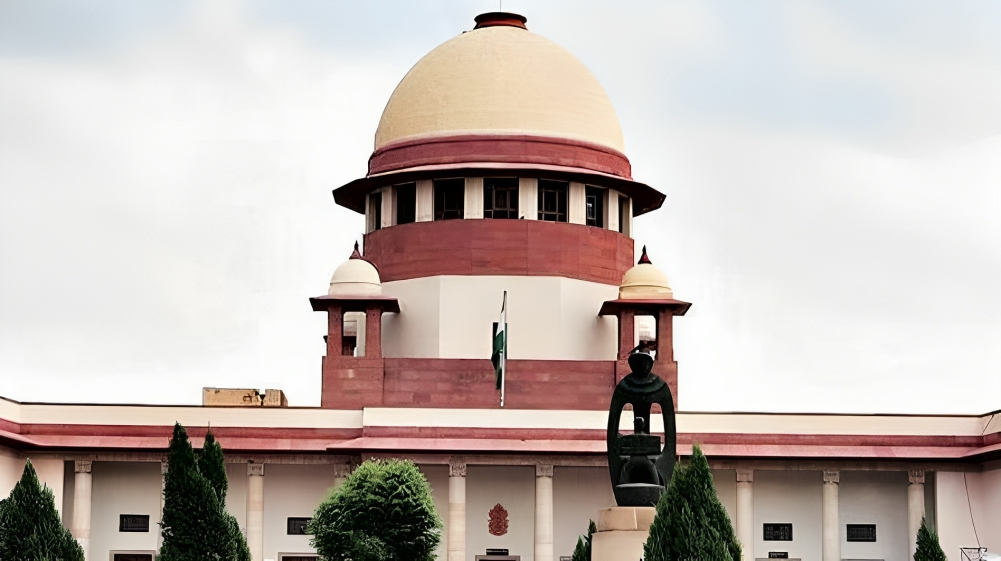Live updates on the verdict of Article 370: The Supreme Court’s Constitution Bench has announced its decision on the petitions challenging the abrogation of Article 370 and the division of Jammu and Kashmir into two Union Territories.
The highest court has upheld the government’s choice to revoke Article 370 and has also stated that measures should be taken to conduct assembly elections by September 30th of the following year. Additionally, the reorganization of Ladakh as a Union Territory has been affirmed by the SC.
Justice Chandrachud explained that Article 370, which was revoked on August 5th, 2019, was a temporary arrangement due to the war situation in the former state.
The verdict was delivered by a five-judge Constitution bench consisting of Chief Justice of India DY Chandrachud, Justices Sanjay Kishan Kaul, Sanjiv Khanna, BR Gavai, and Surya Kant. After hearing arguments for 16 days, the apex court had reserved its decision on September 5th.

The long-awaited judgment on a series of petitions contesting the central government’s decision to revoke Article 370 in 2019 was finally pronounced by a panel of five judges from the Supreme Court. In addition to upholding the act of revoking Article 370, the Supreme Court also instructed the Center to restore it. It is imperative that Jammu and Kashmir be granted the status of a Union Territory without delay.
1) The Supreme Court has affirmed the Central Government’s decision to revoke Article 370 of the Constitution, emphasizing that Jammu and Kashmir does not possess separate internal sovereignty from other states in the nation. Chief Justice DY Chandrachud, along with Justices Gavai and Surya Kant, expressed their support for issuing a constitutional order to abolish Article 370, deeming the exercise of the President’s power as legitimate.
2) Additionally, a 5-judge bench of the highest court upheld the government’s action of establishing the Union Territory of Ladakh by separating it from the former state of Jammu and Kashmir.
3) The bench led by Chief Justice DY Chandrachud also directed that assembly elections should be conducted in the Union Territory of Jammu and Kashmir by September 30 of the following year, while emphasizing the need to restore statehood to Jammu and Kashmir at the earliest opportunity.
4) Chief Justice DY Chandrachud highlighted that Article 370 was initially implemented as a temporary arrangement due to the wartime situation in the former state. He further emphasized that Jammu and Kashmir has now become an integral part of India, evident from Articles 1 and 370. Justice SK Kaul also concurred with the Chief Justice’s stance, stating that the purpose of Article 370 was to gradually reintegrate the former state of Jammu and Kashmir with other Indian states.
5) Chief Justice DY Chandrachud also stated that the principle of consultation is not mandatory when exercising the President’s power.
6) In his ruling, Chief Justice Chandrachud argued that not every decision made by the Central Government on behalf of the states can be legally challenged, as this could potentially hinder the functioning of state administration.
7) Referring to the Maharaja’s Proclamation, it was stated that the Constitution of India would cease to exist, consequently leading to the cessation of the Article in the Instrument of Accession. Article 370 was implemented as a temporary arrangement due to the wartime situation. T.
8) As per PTI report, the Supreme Court bench gathered at 10:56 am to deliver three separate and concurring judgments, while Justices Kaul and Khanna wrote their judgments separately. The Supreme Court had earlier reserved its decision in this matter on September 5.
9) Before the Supreme Court delivered its final verdict on the petitions challenging the abrogation of Article 370, People’s Democratic Party (PDP) president and former Jammu and Kashmir CM Mehbooba Mufti was put under house arrest, while journalists were put under house arrest. No. According to PTI report, permission has been given to gather near the residence of National Conference President Farooq Abdullah and Vice President Omar Abdullah on Gupkar Road.
10) Jammu and Kashmir Lieutenant Governor Manoj Sinha and the local administration have denied the allegations of PDP and NCP that their top leaders have been placed under house arrest. Clarifying its stand through a post on X (formerly Twitter), Srinagar Police wrote, “No person has been detained,” Srinagar Police said in a post on X.

